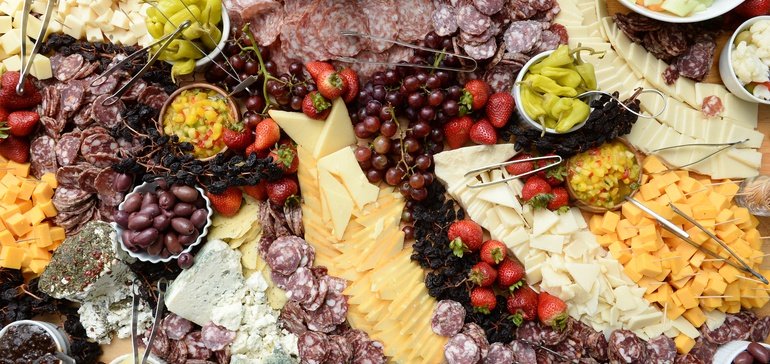Specialty food sales hit record $170.4B in 2020

Dive Brief:
- Specialty food sales hit a record $170.4 billion in 2020, up 13% since 2018, according to the annual State of the Specialty Food Industry Report by the Specialty Food Association. Specialty food sales at retail rose 19.4% in 2020, while sales to foodservice dropped 30%, the group said.
- Thanks to more in-home cooking during the pandemic, the top three specialty food categories by retail dollar sales were frozen and refrigerated meat, poultry and seafood; cheese and plant-based cheese; and chips, pretzels and snacks. The three fastest-growing categories were seasonings; shelf-stable sauces, pasta and pizza; and shelf-stable beans, grains and rice.
- A rise in e-commerce shopping and fewer opportunities to do demos or in-store sampling posed challenges for specialty foods by limiting visibility and opportunities for impulse purchases, said the SFA, and it will continue to be a challenge for the segment in the year ahead.
Dive Insight:
Consumers began stockpiling early on in the pandemic and rediscovered the usefulness of keeping their refrigerators and pantries full of options, according to the SFA. Beyond meats, cheeses and snacks, other top specialty food segments by retail dollar sales in 2020 included bread and baked goods, coffee and hot cocoa, frozen desserts, refrigerated and frozen entrees, confectionery, and shelf-stable condiments, dressings and marinades.
This demand created both opportunities and challenges for specialty food manufacturers. The segment was already on an upward growth trajectory as consumers showed a bigger appetite for innovation and startup brands.
As Big Food dealt with supply chain challenges and struggled to meet demand during the pandemic, an opportunity arose for specialty food brands to catch consumers’ attention. According to data from IRI, smaller CPGs and private label brands gained 1.3 points in share or $12.1 billion in sales in 2020, and marked their fifth consecutive year of stealing market share from large manufacturers. Smaller brands accounted for about one-third of the 10.3% in growth the CPG industry saw last year.
The pandemic also gave consumers time to explore new foods and ways of eating, including plant-based protein. The SFA noted that the plant-based specialty food and beverage market grew 42% in 2020, which is nearly twice the growth rate as the entire specialty market. That said, Big Food players are also getting involved in the plant-based space, the group noted, and bringing considerable competition to specialty brands. These include Kellogg, Danone and Nestlé.
Although COVID-19 boosted food sales across the board, smaller food companies also struggled to address the pandemic’s impact on employee health, labor, supply chain consistency, liquidity and more, then-SFA President Phil Kafarakis told Food Dive in April 2020. Large food companies also faced challenges but had more resources to address them and a greater ability to absorb the pandemic’s impact.
Navigating the rise of online retail will also be an ongoing challenge for the specialty food segment, the SFA noted. Many consumers have become more comfortable with e-commerce during the pandemic. A study by the Consumer Brands Association found that as many as 77% plan to continue shopping online even as restrictions lift. Specialty food makers will need to find new and creative ways to increase their visibility as consumers spend more time shopping at a computer and less time perusing supermarket shelves.
There may be some new opportunities for specialty food makers to reach consumers who have started shopping for groceries in stores that they may not have visited very often in the past, according to the SFA. Drug stores boosted their customer traffic during 2020 with the addition of grab-and-go and refrigerated aisles, the group noted, while dollar stores are set to make up half of newly opened stores in 2021.
Source: fooddive.com

